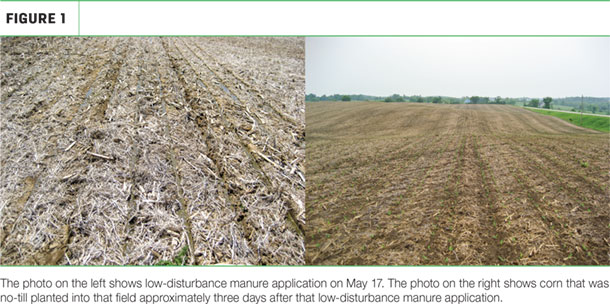What are your goals and objectives of producing cover crops? That is typically the first question I ask farmers when they start asking or talking about cover crops.
Once I know what their goals and objectives are, that lets us start the planning process for cover crops to integrate them into their crop rotations and get the best return on investment. In order for farms to utilize cover crops and see a positive return on that investment, they really need to treat the cover crop as an actual crop.
The next couple of questions I like to ask of the farms when planning cover crops with them are:
- What is the existing crop the cover crop will follow out there?
- is the next planned crop to be planted after the cover crop?
The answers to these two questions immediately start to point us in a direction of species, planting rates and planting dates to try and achieve their goals and objectives.
Planning cover crops with manure – hands down, I would say this is my biggest challenge to deal with when planning cover crops for farmers. Locally in Manitowoc County, we have lots of dairy cows, which means we have lots of manure to deal with. The majority of manure in the county is applied to cropland in the fall after crops are harvested and incorporated via mechanical tillage.
Those fields then sit bare with no cover from late summer to fall, until they are planted the following spring. This is potentially a great opportunity to do some planning with manure and cover crops in the farm’s rotations. If we can incorporate more cover crops into the rotation with manure, it will reduce erosion, sediment and nutrient loss off the field, and improve soil health and water quality.
Historically, if farms were interested in planting cover crops in the fall, they would typically try to get manure applied to the field first, then plant the cover crop after manure is applied. This isn’t a bad way to do it; however, the manure application may delay the planting of the cover crop upwards of a week or so waiting for the manure or soil to dry up to allow planting of the cover crop. This is key in the late summer and fall as we are losing critical growing degree days for that cover crop to start growing and get established.
In the past two or three years, some custom manure haulers have added pieces of equipment to their lineup that allow them to apply manure to an established cover crop in the late summer or fall and not destroy that cover crop. Low-disturbance manure applicator technology (Figure 1) is fantastic at allowing farms to apply manure to an established cover crop at rates comparable to surface applying and incorporating or using standard manure injection equipment.

Over the past two years, I’ve been at meetings with the custom manure haulers in the county, and it’s very encouraging to hear them say, “Just get the cover crop planted first. We can apply manure to the cover crop no matter how big it gets.”
Planning overwintering cover crops – I feel this is where we can get the biggest return on investment for planting cover crops. Once I know the farm’s goals and objectives and what crop is currently out there, and what the next planned crop in the rotation is, that is when I can really start to work with the farm on selecting species of cover crops. Species selection of cover crops is key to success with the timing of planting in the late summer and fall. Ideally, the earlier we can get a cover crop planted in the fall, the more growth we should see on that plant before it either winter-kills or goes dormant.
Ultimately, a mix of cover crops that contains a cool-season grass, cool-season broadleaf and/or legume, warm-season grass and warm-season broadleaf and/or legume is the best type of cover crop to plant, if you can get it planted early enough in the year. A mix of all those species, when planted early enough, should ensure several species of cover crops in the mix that should do well throughout late summer into fall as it starts to cool off and seasons change.
Locally in Manitowoc, there is a lot of corn silage grown, and it is typically harvested in mid- to late September. When we get that late in the year, it really starts to limit what we can use for cover crops to get a successful establishment in the fall. A couple species we typically target are winter cereal rye (Figure 2) and winter triticale.

Both these species can be planted later in fall and will be green next spring. The benefits of planting a species that survives winter and will be green next year in early spring is it will provide cover to the soil, hold nutrients in place, reduce weed competition and potentially provide a forage to the farm in late May.
In summary, if we can target cover crop species or mixes that work well with manure, crop rotations, no-till, low-disturbance manure applicators, survive over winter, reduce soil erosion, retain or cycle nutrients, reduce weed competition, provide a forage source, increase yields, help the soil biology and most importantly meet the farm’s goals and objectives, that is a huge return on investment for the farm.









